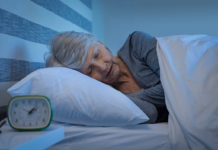According to a new report published by the International Osteoporosis Foundation (IOF), women may expect to live longer but their quality of life will be seriously jeopardized if action to protect their bone health is not taken. Postmenopausal women are the most vulnerable to osteoporosis and fractures. Worldwide, an estimated 200 million women are affected by osteoporosis and around one in three women aged over 50 will suffer from a fracture due to the disease.
With an increasingly aging population huge demands will be put on health care systems and on those professionals who provide care within them. In the European Union alone osteoporosis costs €37 billion and with the number of sufferers projected to increase by 23 per cent from 27.5 million in 2010 to 33.9 million in 2025, the costs will continue to escalate. Health care budgets will have to cope with the tsunami of need fueled by age-related chronic diseases in the baby-boomer generation.
Professor John A. Kanis, President, IOF urged, “The time to act is now, those of us working in the non-communicable disease (NCD) community congratulated governments for their commitment to reduce the NCD burden by 25 per cent by 2025, at the World Health Assembly in 2012. As advocates for bone, muscle and joint health we have identified cost-effective evidence-based solutions that can be implemented immediately, which will not only save lives but reduce health care costs, and ultimately help governments reach this target.”
The report ‘Bone care for the postmenopausal woman’ provides solutions for fracture prevention and management. Given that women over the age of 50 play a critical role as caregivers and breadwinners within the family and society, their bone health is a priority to safeguard future generations. For example, in the US, 43 per cent of caregivers are women aged 50 or over; in Spain 70 per cent of women aged over 65 care for their grandchildren, many every day. Around the world it is women over 50 who most often take on the burden of care for elderly parents and disabled or sick family members.
“Although the earlier prevention begins the better, when a woman reaches menopause she must not delay any longer. Menopause is the critical time to take preventive measures against bone loss and muscle weakness that can lead to osteoporosis, falls and fractures,” said report co-author Professor Bess Dawson Hughes, Director of the Bone Metabolism Laboratory, Jean Mayer USDA Human Nutrition Research Center on Aging at Tufts University, Boston, USA.
Bone is a living tissue which regenerates itself throughout life thanks to a fine balance of bone resorption (breakdown) and formation. However at menopause, bone resorption exceeds bone formation leading to a rapid decline in bone mass. Increased bone loss can lead to osteoporosis, a disease which causes bones to become porous, weak, and easily prone to fractures.
Fractures can exact a terrible toll on quality of life, and in women over 45 they account for more days spent in hospital than many other diseases, including diabetes, heart attack, and breast cancer.
Secondary fracture prevention is also an important message of the report. “An individual who has experienced a fracture is at double the risk of suffering a second fracture as compared to a person without fractures. In postmenopausal women, a broken wrist or a spinal fracture is often the harbinger of more fractures to come and should be taken as a warning that testing and preventive treatment is needed. Given that 20 per cent of those who suffer a hip fracture die within one year, it is not only unacceptable but unjust not to take action to change this,” said Professor Cyrus Cooper, Chair, IOF Committee of Scientific Advisors.
Source: International Osteoporosis Foundation. “Osteoporosis a major threat to women’s future independence.” ScienceDaily, 10 Oct. 2013. Web. 10 Oct. 2013.















